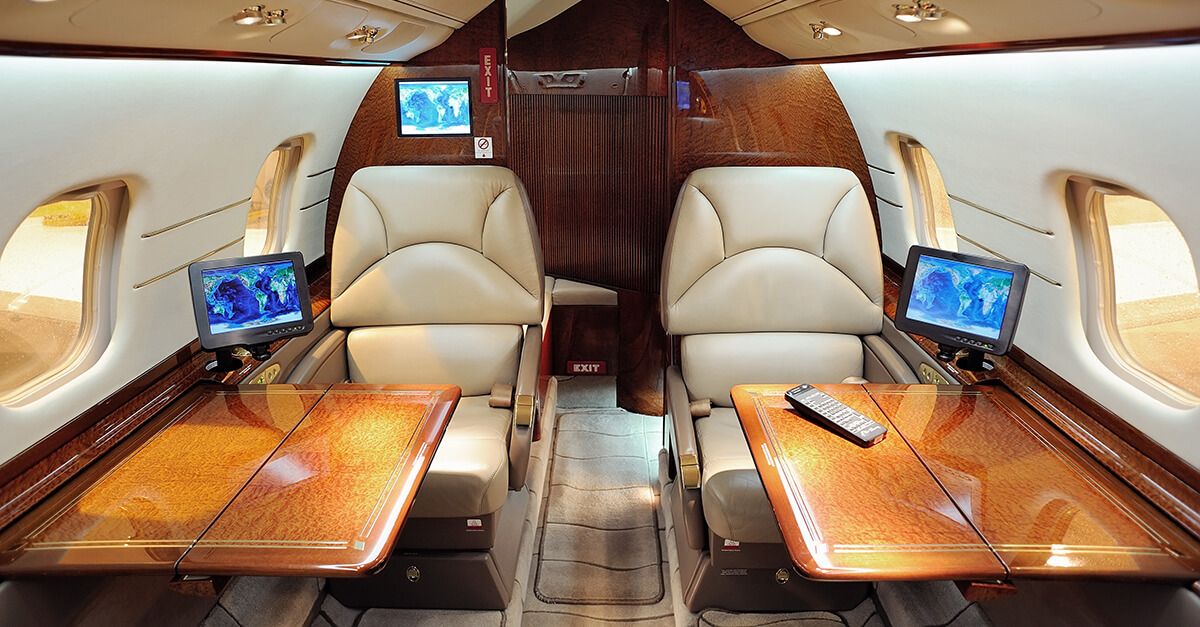
May 13, 2020
Because cleaning and sanitizing business aircraft continues to be a top priority during the pandemic, the industry continues to explore ways to ensure that aircraft passengers and crews are protected as much as possible.
NBAA’s most recent News Hour webinar – “Sanitizing Your Business Aircraft During COVID-19, Part 2” – continued to share information on the challenges that operators are facing:
- Choosing the right cleaning products for their aircraft
- Determining the appropriate frequency of cleanings
- Learning how to deal with pre-flight and in-flight risk assessments associated with the virus
Thoroughly vetting your passengers and the outbreak situation at the departure city or country is an essential part of the process prior to departure.
“Your preflight risk-assessment will help determine how you react later on, including your methods of cleaning and disinfection,” said Dr. Paulo Alves, global director of aviation health for MedAire. He noted that preflight assessments can range from a passenger health questionnaire and temperature checks to eventually an “immunity passport.”
Alves also encouraged operators to notice more subtle clues about how seriously passengers are taking safeguarding themselves, including whether they are wearing a face covering or standing apart from groups.
“Both your preflight and inflight risk assessments will lead to your [sanitizing] strategy at your destination,” explained Alves. Infight assessments also include the use of a face mask, as well as how many passengers are on the aircraft and whether meals are served.
Alves reminded operators that there is a psychological approach to disinfection and cleaning strategies, as well as a technical approach. “The flying public needs to be reassured that the whole operation is completely clean,” declared Alves. “This matters tremendously.”
Frances Gristead, the CEO of CURIS System and founder of Pathogend Services, explained the important differences between cleaning/sanitizing, disinfecting and sporicide treatment, which kills essentially all organisms.
“You can’t disinfect a dirty surface,” said Gristead, noting that manual cleaning is necessary prior to applying a disinfectant. She also recommended that aircraft operators pay close attention to the “dwell times” required by various products to kill organisms (check the product labels, or visit www.epa.gov).
Sticky residue left behind after sanitizing can also be problematic, both for disinfection purposes, as well as for the integrity of the material, such as leather. “You don’t want to cause more harm than good,” said Gristead.
Possible corrosion of components or avionics due to use of improper cleaning methods or products is a particularly vexing issue for business aircraft operators. Webinar moderator Stewart D’Leon, NBAA’s director of technical operations, encouraged operators to check the disinfecting product recommendations of the OEMs, which are posted at NBAA’s online Coronavirus resource page.
Gristead raised the issue of liability release and the need to prove that the aircraft was completely decontaminated, which means removal of 99.9999% of organisms.
“You need a complete kill, and the products should be federally approved,” advised Gristead.
Keeping records of actions taken is very important, and that can be accomplished via work order, said Nathan Winkle, founder and president of Thoroughbred Aviation. “We monitor, monitor, monitor,” said Winkle, who also suggested swabbing key surfaces for contaminants.
The webinar also examined the pros and cons of ionizing cabin air and the use of UV light as part of the disinfecting process. Grisier acknowledged that both methods are helpful, but they may not provide the complete kill necessary. In addition, UV light may also degrade materials in the aircraft if used long-term, according to Chris Schultheis, president of Midwest Pathogend Services.
Finally, it’s important to find out as much as possible about the cleaning and disinfection practices of the company operating the ground vehicle that brought your passengers to the aircraft, according to Greg Hamelink, senior manager of flight operations and maintenance for Stryker Corp. “Car services are potentially an unknown risk factor,” he said.
This webinar is just one in a series of educational opportunities NBAA has planned for the coming weeks. Learn more, register for upcoming webinars and view recordings of past webinars, including Part 1 of the sanitizing webinar, on the NBAA News Hour site.


 International Business Aviation Council Ltd.
International Business Aviation Council Ltd.